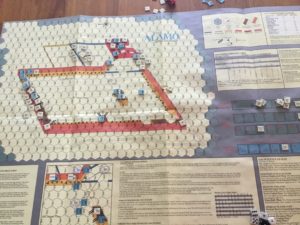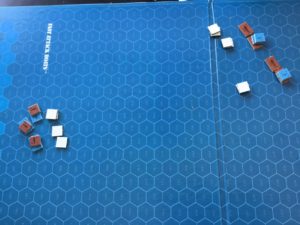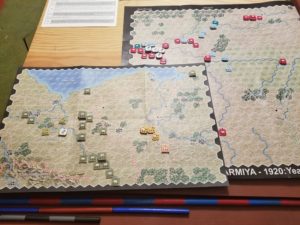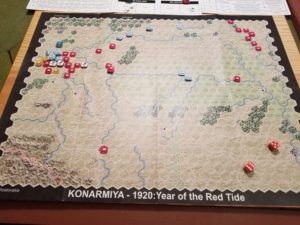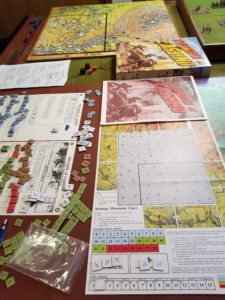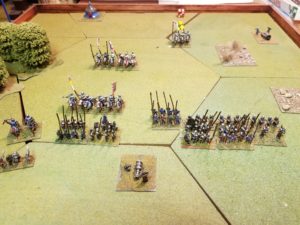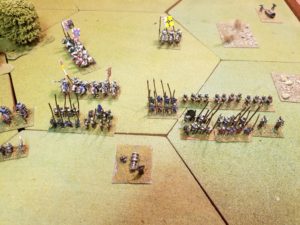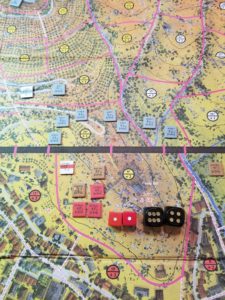Finished up the fourth turn of The Alamo: Victory in Death.
Figured out the casualty rules that had baffled me. Silly me, just read the rules and interpret them literally. Things will work out.
Crockett’s attempt to push out beyond the walls was a foolish. Now surrounded and locked in , he’ll eventually be killed. The west wall has been overrun and now all that is left is the time consuming chore of isolating each Texan unit and destroying it. Reorganized Mexican units are flooding back onto the battlefield, and there seems little chance that the Texans can last another ten turns.
The initial setup is everything. The Texans have to react quickly to stop any massed Mexican attacks, and the Mexicans, in turn, must be creative to exploit any Texan attempt to reinforce a threatened area by judicious of their reserve units.
It’s a tense contest for the first several turns. Worth the time to play.
